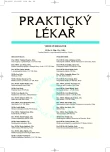Renal failure and renal replacement therapy in children
Authors:
K. Vondrák; E. Šimková; J. Dušek; P. Dvořák; J. Kreisinger; T. Seman; J. Janda
Authors‘ workplace:
Přednosta: prof. MUDr. Jan Lebl, CSc.
; Pediatrická klinika 2. LF UK a FN Praha-Motol
Published in:
Prakt. Lék. 2007; 87(4): 218-221
Category:
Various Specialization
Overview
The authors summarize the current understanding of renal failure in children. They define hyperazotaemia, chronic renal insufficiency, acute and chronic renal failure and various stages of chronic renal failure according to the international guidelines. The most common causes of renal failure in childhood are indicated. Metabolic changes, based mainly on chronic renal failure, and the strategy of possible conservative treatment as well as renal replacement therapy are analyzed. In addition to treatment using drugs, dietary and non-medical treatment is discussed. Finally, the principles of particular renal replacement methods are explained, as are the indications and contraindications.
Key words:
acute and chronic renal failure, chronic renal insufficiency, management of chronic renal failure, renal replacement therapy.
Labels
General practitioner for children and adolescents General practitioner for adultsArticle was published in
General Practitioner

2007 Issue 4
Most read in this issue
- Todays trends of diagnostics and treatment of scaphoid bone fractures
- Extensive trombosis of thoracic aorta – an unusual source of acute peripheral arterial embolism.
- Epileptic fit as a syncope equivalent in severe aortic stenosis.
- Smoking and skin
